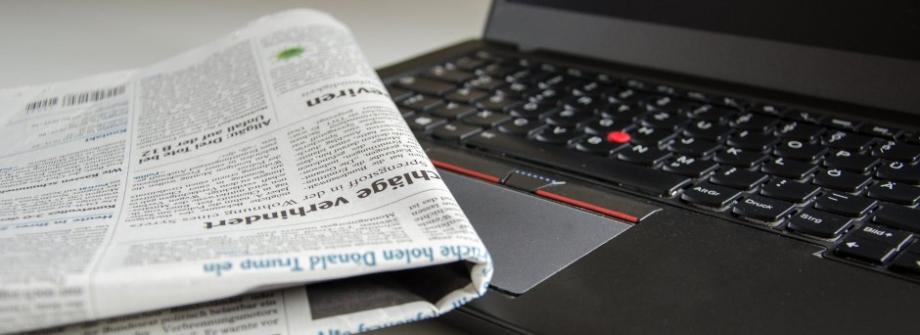
Silvia Montoto, Consultant in Haemato-Oncology at the St. Bartholomew's Hospital in London, comment on the publication titled “Long-term follow-up demonstrates curative potential of autologous stem cell transplantation for relapsed follicular lymphoma" published in the British Journal of Haematology.
Long-term follow-up demonstrates curative potential of autologous stem cell transplantation for relapsed follicular lymphoma
Robert Puckrin et al.
Br J Haematol. 2023 Apr;201(2):319-325. doi: 10.1111/bjh.18640.
Puckrin and colleagues report on a retrospective multicentre study analysing the outcome of patients with relapsed follicular lymphoma (FL) who received an autologous stem cell transplant in Alberta, Canada, after a long follow-up. The study included 162 patients with FL (excluding those with grade 3b or transformed lymphoma) that had an autologous transplant beyond first remission, between 1992 and 2020. After a median follow-up of 12.5 years, the 12-year time-to-progression (TTP), progression-free survival (PFS) and overall survival (OS) were 57%, 51% and 69%, respectively. The authors demonstrated that a plateau emerged in the TTP and cumulative incidence of relapse curves 9 years after the transplant. With half the patients followed up for longer than 12 years, no relapses were observed beyond 9 years. Patients that were transplanted at first or second relapse had a better outcome, in terms of TTP, after adjusting for other variables on the multivariate analysis, whereas those with progression of disease within 24 months (POD24) had a significantly worse outcome.
The results published by Puckrin and colleagues (1) are not new and, hence, should not be surprising. One of the main arguments used by detractors and critics of the use of autologous transplant in patients with FL was the fact that it could not be considered a curative option: studies without a long follow-up showed a continuous drop in the PFS curve, and this was interpreted as ‘all patients would relapse after an autologous transplant if they were followed long enough’. Quite the contrary, several studies with a median follow-up longer than 8-10 years, including 2 studies from the Lymphoma Working Party-EBMT (2-6), have demonstrated that the relapse curve flattens around 8-10 years after the transplant, with very few (if any) recurrences after this point. Yet, Puckrin and colleagues are the first brave enough to mention curability in the title of their paper. The evidence that a (considerable, significant, small: the adjective to include here depends on whether one sees the glass half full or half empty) proportion of patients with FL can actually be cured with an autologous transplant is, thus, abundant. The difficulty is, and has always been, where to place autologous transplant in the therapeutic algorithm for patients with FL, given the fact that not the majority of the patients will be cured with an autologous transplant (in most of the studies the cure rate of autologous transplant is around 40%, the current study being a positive outlier), but patients can still survive a long time, even if they are not cured (the median OS of patients with FL after 3rd line has been reported to be at least almost 5 years (7)). There is a clear sub-group of patients with a worse prognosis, those who present POD24, and Puckrin and colleagues demonstrate that even in this high-risk population, half of them can enjoy a very long remission (=be cured) with an autologous transplant. The introduction of CAR-T can further muddle the waters in the future. At the moment, in spite of very exciting results, there is no data to support a better cure rate for patients with FL with CAR-T than with autologous transplant, contrasting with the data in patients with diffuse large B-cell lymphoma. Time will tell if CAR-T can cure more patients with FL than autologous transplant.
1. Puckrin R, Chua N, Chin K, Peters A, Duggan P, Shafey M, et al. Long-term follow-up demonstrates curative potential of autologous stem cell transplantation for relapsed follicular lymphoma. Br J Haematol. 2023;201(2):319-25.
2. Rohatiner AZ, Nadler L, Davies AJ, Apostolidis J, Neuberg D, Matthews J, et al. Myeloablative therapy with autologous bone marrow transplantation for follicular lymphoma at the time of second or subsequent remission: long-term follow-up. J Clin Oncol. 2007;25(18):2554-9.
3. Montoto S, Canals C, Rohatiner AZ, Taghipour G, Sureda A, Schmitz N, et al. Long-term follow-up of high-dose treatment with autologous haematopoietic progenitor cell support in 693 patients with follicular lymphoma: an EBMT registry study. Leukemia. 2007;21(11):2324-31.
4. Kornacker M, Stumm J, Pott C, Dietrich S, Sussmilch S, Hensel M, et al. Characteristics of relapse after autologous stem-cell transplantation for follicular lymphoma: a long-term follow-up. Ann Oncol. 2009;20(4):722-8.
5. Metzner B, Pott C, Muller TH, Casper J, Kimmich C, Petershofen EK, et al. Long-term outcome in patients with follicular lymphoma following high-dose therapy and autologous stem cell transplantation. Eur J Haematol. 2021;107(5):543-52.
6. Pettengell R, Uddin R, Boumendil A, Johnson R, Metzner B, Martin A, et al. Durable benefit of rituximab maintenance post-autograft in patients with relapsed follicular lymphoma: 12-year follow-up of the EBMT lymphoma working party Lym1 trial. Bone Marrow Transplant. 2021;56(6):1413-21.
7. Rivas-Delgado A, Magnano L, Moreno-Velazquez M, Garcia O, Nadeu F, Mozas P, et al. Response duration and survival shorten after each relapse in patients with follicular lymphoma treated in the rituximab era. Br J Haematol. 2019;184(5):753-9.